EXAMPLE from CP SINGH PHYSICS Chapter 19 WAVE NATURE OF LIGHT for Class 12
| Class 12 | PHYSICS |
| Chapter | WAVE NATURE OF LIGHT |
| CP SINGH PHYSICS | EXAMPLE |
| Medium | English |
| Academic Year | 2023-2024 |
Question 3
A narrow monochromatic beam of light of intensity 1 is incident on a glass plate as shown in figure Another identical glass plate is kept close to the first one and parallel to it. Each glass plate reflects 25% of the light incident on it and transmits intensities in the interference pattern formed by two beams obtained after one reflection at each plate.
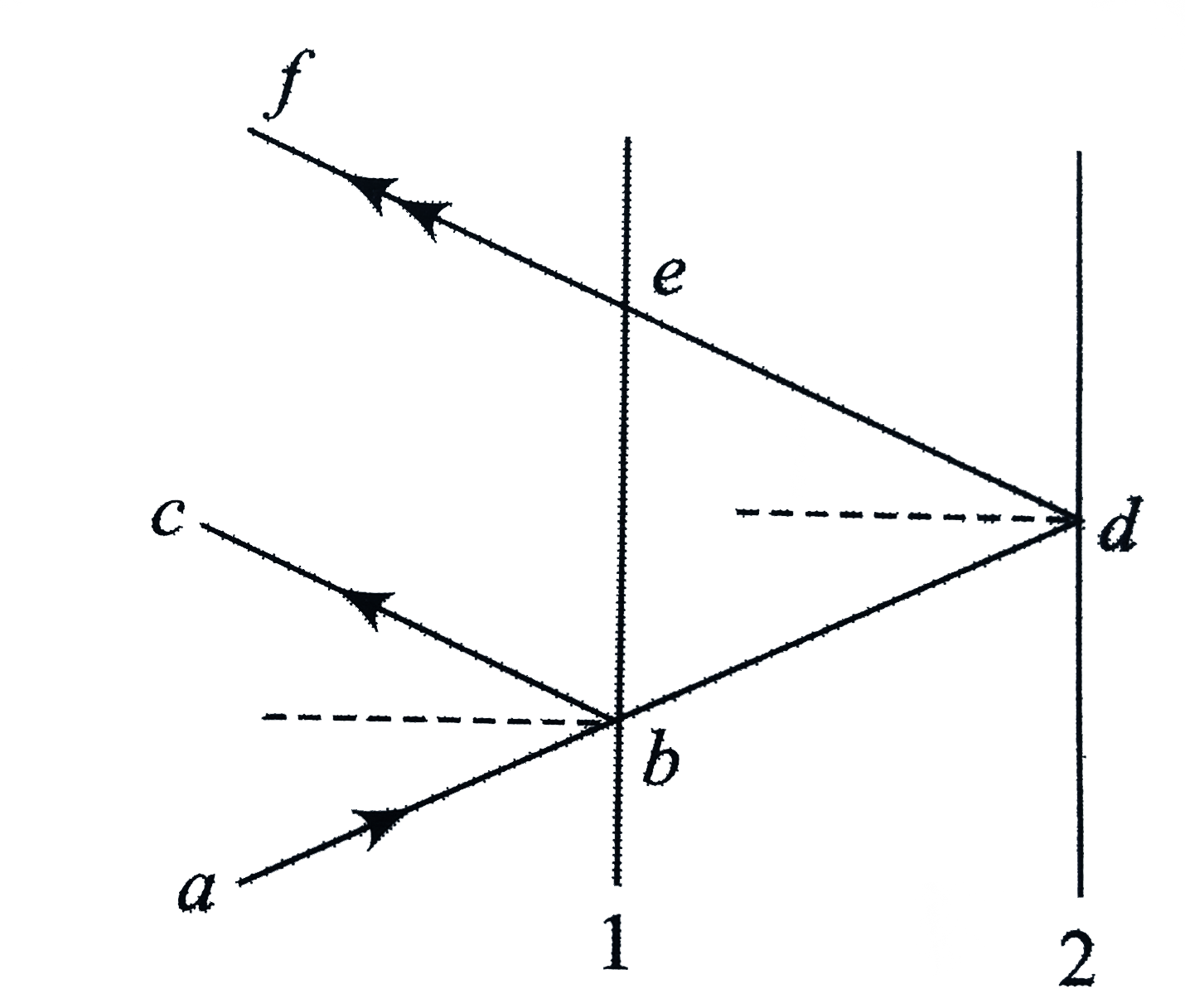 View Solution
View SolutionQuestion 4
In Young's double slit expriment, separation between slits is 1mm, distance of screen from slits is 2.5m. If wavelength of incident light is 400nm. Determine
(a) Fringe width.
(b) Angular frige width.
(c ) Distance between 4th bright fringe and 3rd dark fringe.
(d) If whole arrangement is immersed in water (μω=4/3), new angular fringe width.View SolutionQuestion 5
In a two slit experiment with monochromatic light, fringes are obtained on a screen placed at some distance from the slits . If the screen is moved by 5×10−2m, towards the slits, the change in fringe width is 3×10−5m. If separation between the slits is 10−3m, the wavelength of light used is View SolutionQuestion 6
A beam of light consisting of two wavelengths 650nm and 520nm is used to obtain interference fringes in a Young's double slit experiment.
(a) Find the distance of the third bright fringe on the screen from the central maximum for the wavelength 650nm.
(b) What is the least distance from the central maximum where the bright fringes due to both the wavelengths coincide? The distance between the slits is 2mm and the distance between the plane of the slits and screen is 120cm.View SolutionQuestion 7
White coherent light (400nm−700nm) is sent through the slits of a YDSE. D=0.5mm, D=50 cm. There is a hole in the screen at a point 1.0mm away (along the width of the fringes) from the central line.
(a) Which wavelength will be absent in the light coming from the hole?
(b) Which wavelength(s) will have a strong intensity?
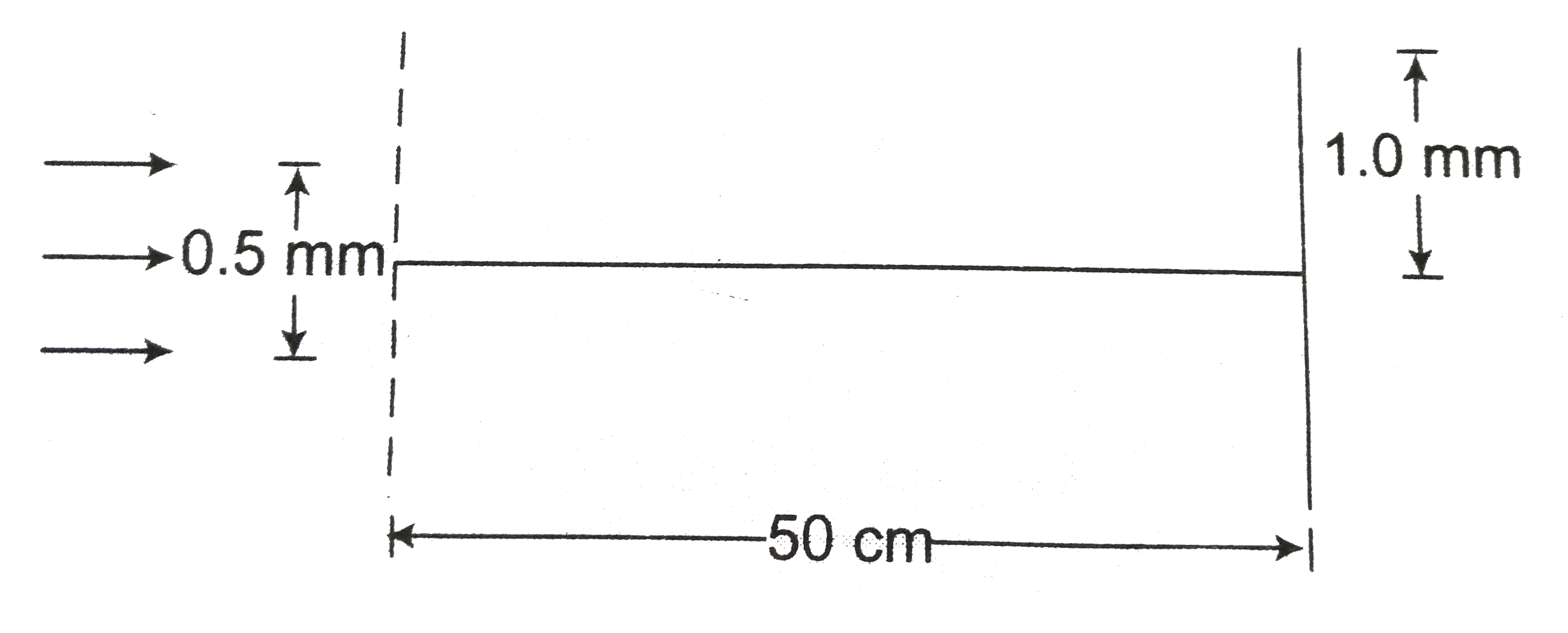 View Solution
View SolutionQuestion 8
In a YDSE, the separation between slits is 2mm where as the distance of screen from the plane of slits is 2.5m. Light of wavelengths in the range 200−800nm is allowed to fall on the slits. Find the wavelengths in the visible region that will be present on the screen at 1mm from central maximum. Also find the wavelength that will be present at that point of screen in the infrared as well as in the ultraviolet region.View SolutionQuestion 9
White light is used to illuminate the two slits in a Young's double slit experiment. The separation between the slits is b and the screen is at a distance d(gtb) from the slits. At a point on the screen directly in front of one of the slits, certain wavelength are missing. Some of these missing wavelength areView SolutionQuestion 10
In a Young's double slit interference experiment the fringe pattern is observed on a screen placed at a distance D from the slits. The slits are separated by a distance d and are illuminated by monochromatic light of wavelength λ. Find the distance from the central point where the intensity falls to (a) half the maximum, (b) one fourth of the maximum. View SolutionQuestion 11
In an interference arrangement similar to double-slit experiment, S1 and S2 are illuminated with coherent source microwave source each of frequency 1 MHz. the sources are synchronized to have zero phase difference . This slits are separated by distance d=150.0m The intensity I(θ) is measured as a funciton of θ, where θ is defined as shown in figure. If I0 is maximum intensity, calculate I(θ)
For :
a. θ=0 b. θ=30∘
c. θ=90∘
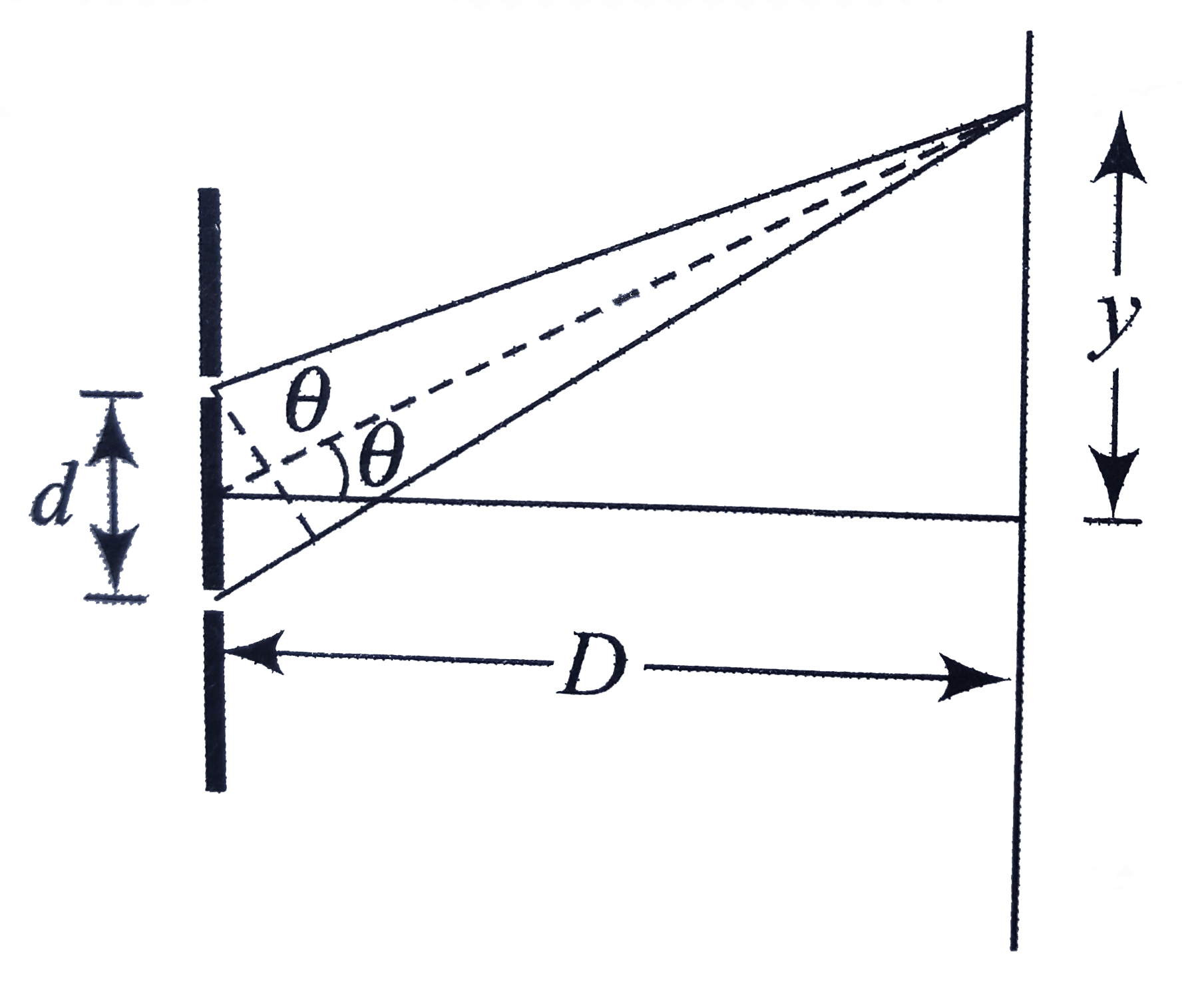 View Solution
View SolutionQuestion 12
In figure S is a monochromatic point source emitting light of wavelength λ=500nm. A thin lens of circular shape and focal length 0.10m is cut into two identical halves L1 and L2 by a plane passing through a doameter. The two halves are placed symmetrically about the central axis SO with a gap of 0.5mm. The distance along the axis from A to L1 and L2 is 0.15m, while that from L1 and L2 to O is 1.30m. The screen at O is normal to SO.
(a) If the 3rd intensity maximum occurs at point P on screen, find distance OP.
(b) If the gap between L1 and L2 is reduced from its original value of 0.5mm, will the distance OP increases, devreases or remain the same?
 View Solution
View SolutionQuestion 13
Two coherent radio-frequency point sources separated by 2.0m are radiating in phase with λ=0.50m. A detector moves in a circuit of large radius around the two sources in a plane containing them as shown in figure. Find (a) the angular position of interference maxima for 0≤θ≤90∘ and (b) number of maximum in the range (−π2)≤θ≤π2 and in one complete rotation.
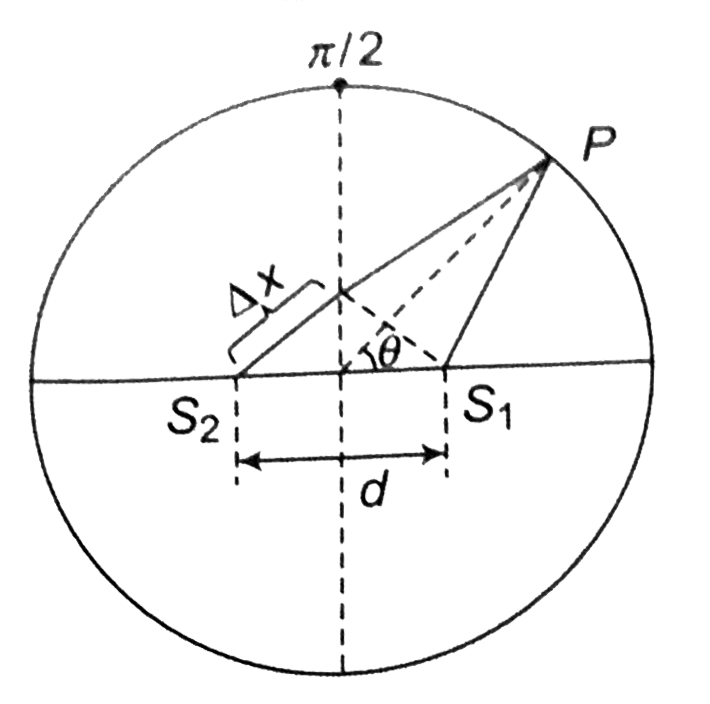 View Solution
View SolutionQuestion 16
A parallel beam of monochromatic light is used in a Young's double slit experiment. The slits are separated by a distance d and the screen is placed parallel to the plane of the slits. Show that if the incident beam makes an angle θ=sin−1(λ2d) with the normal to the plane of the slits, there will be a dark fringe at the centre Po of the pattern. View SolutionQuestion 17
A coherent parallel beam of microwaves of wavelength λ=0.5mm falls on aYoung's double- slit apparatus. The separation between the slits is 1.0 mm. The intensity of microwaves is measured on a screen placed parallel to the plane of the slits at a distance of 1.0 m from it as shown in Fig. 2.42.
If the incident beam makes an angle or 30∘ with the x-axis (as in the dotted arrow shown in the figure), find the y-coordinates of the first minima on either side of the central maximum.
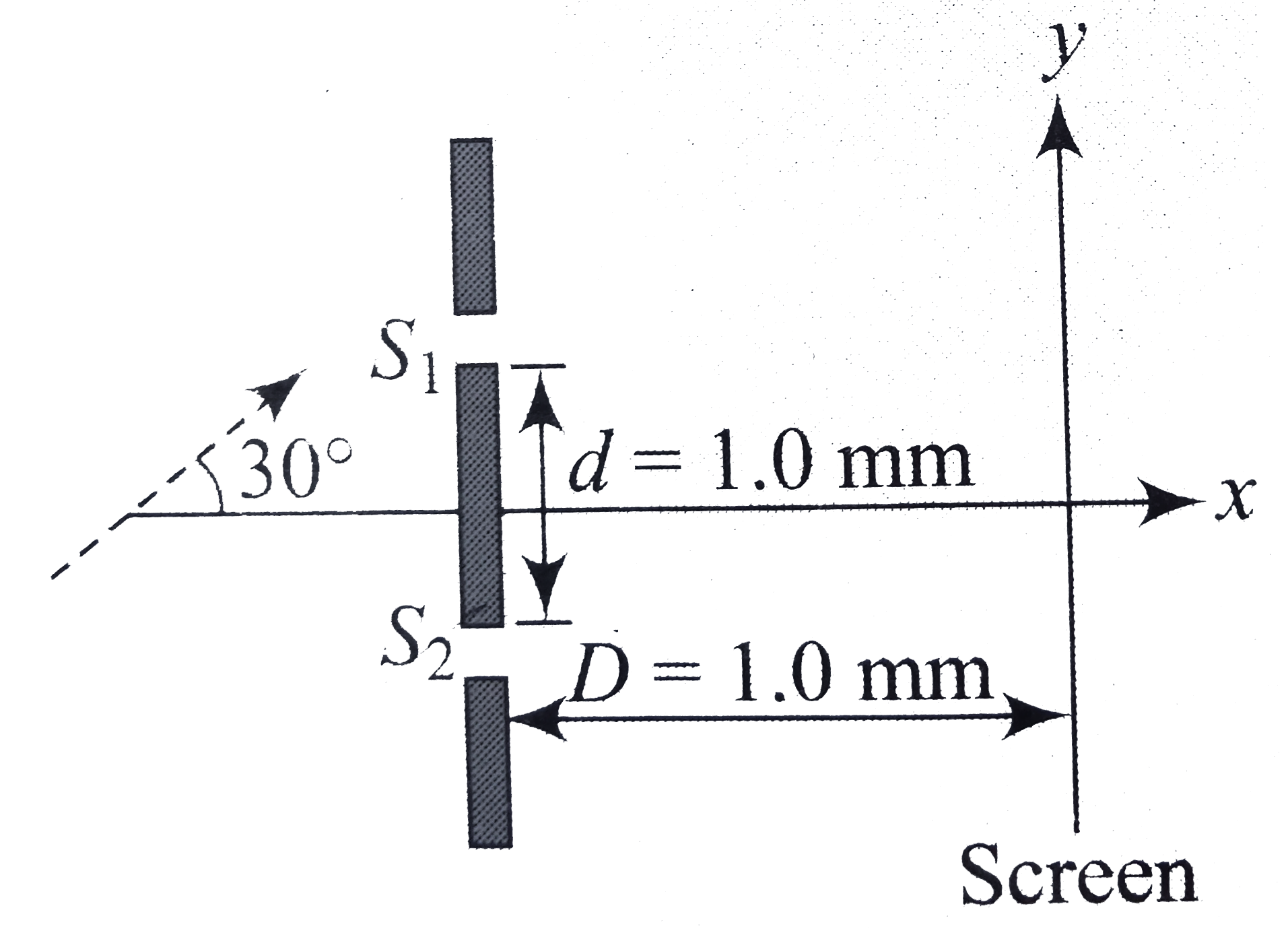 View Solution
View SolutionQuestion 18
In YDSE using monochromatic light the fringe pattern shifts by a certain distance on the screen when a mica sheet of refractive index 1.6 and thickness 1.964 microns is introduced in the path of one of the interfering waves. The mica sheet is then removed and the distance between the plane of slits and the screen is doubled. It is found that the distance between successive maxima (or minima) now is the same as the observed fringe shift upon the introduction of the mica sheet. Calculate the wavelength of the light.View SolutionQuestion 19
A monochromatic light of λ=500nm is incident on two identical slits separated by a distance of 5×10−4m. The interference pattern is seen on a screen placed at a distance of 1m from the plane of slits. A thin glass plate of thickness 1.5×10−6m and refractive index μ=1.5 is placed between one of the slits and the screen. Find the intensity at the centre of the screen if the intensity is I0 in the absence of the plate. Also find the lateral shift of the central maxima and number of fringes crossed through centre.View SolutionQuestion 20
A thin paper of thickness 0.02 mm having a refractive index 1.45 is pasted across one of the slits in a YDSE. The paper transimits 4/9 of the light energy falling on it.
a. Find the ratio of maximum intensity to the minimum intensity in interference pattern.
b. How many fringes will cross through the center if an indentical paper piece is pasted on the other slit also? The wavelength of the light used is 600 nm.View SolutionQuestion 21
In YDSE, the sources is red ligth of wavelength 7×10−7m. When a thin glass plate of refractive index 1.5 is put in the path of one of the interfering beams, the central bright fringe shifts by 10−3 m to the position previously occupied by the 5th bright fringe.
If the source is now changed to green light of wavelength 10−7m, the central fringe shifts to a position initially occupied by the sixth bright fringe due to red ligth. What will be refractive index of glass plate for the second ligth for changed source of ligth?View SolutionQuestion 22
A double slit apparatus is immersed in a liquid of refractive index 1.33. It has slit and the screen 1 mm. The slits are illuminated by a parallel beam of light whose wavelength in air is 6300Å
a. calculate the fringe width.
b. One of the slits of the apparatus is covered by a thin glass sheet of refractive index 1.53. Find the smallest thickness of the sheet to bring athe adjacent minima on the axis.View SolutionQuestion 23
A YDSE is performed in a medium of refractive index 4/3, A light of 600 nm wavelength is falling on the slits having 0.45 nm separation . The lower slit S2 is covered b a thin glass plate of thickness 10.4 mm and refractive index 1.5. The interference pattern is observed on a screen placed 1.5 m from the slits as shown in figure. (All the wavelengths in this problem are for the given medium of refractive index 4/3, ignore absorption.)
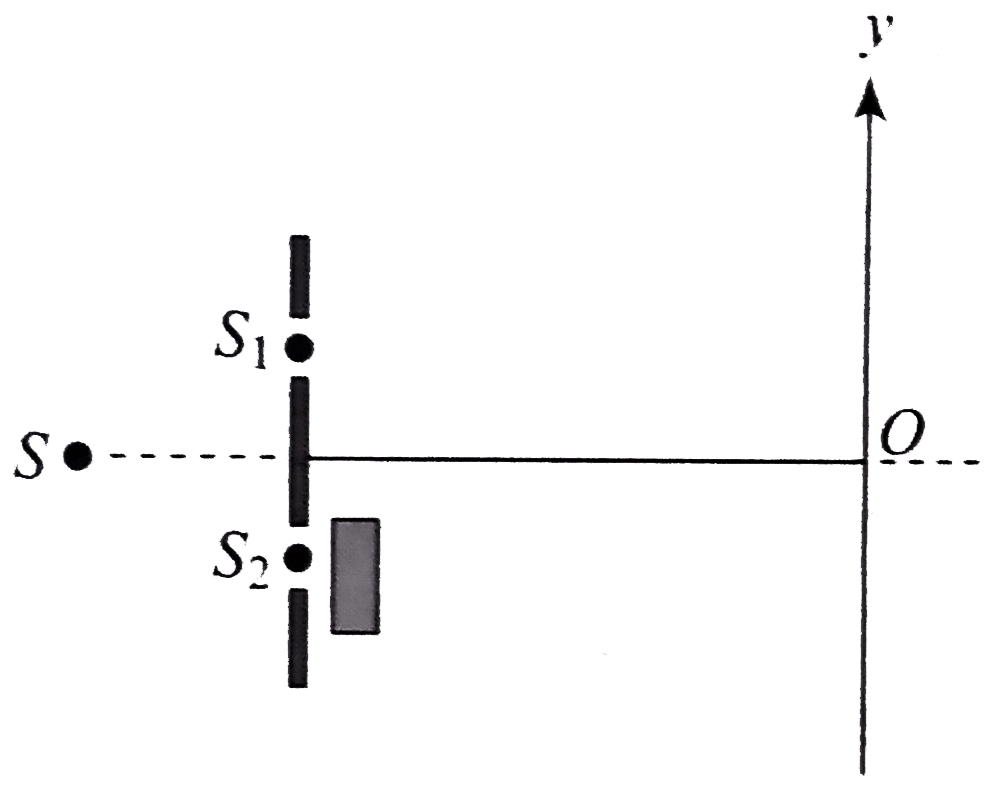
Now, if 600 nm, find the wavelength of the ligth that forms maximum exactly at point O.View SolutionQuestion 24
In a modified Young's double-slit experiment, a monochromatic uniform and parallel beam of light of wavelength 6000Å and intensity (10/π) W m−2 is incident normally on two circular apertures A and B of radii 0.001 m and 0.002 m, respectively. A perfectly transparent film of thickness 2000Å and refractive index 1.5 for the wavelength of 6000Å is placed in front of aperture A (see the figure). Calculate the power (in mW) received at the focal spot F of the lens. Then lens is symmetrically placed with respect to the aperture. Assume that 10% of the power received by each aperture goes in the original direction and is brought to the focal spot.
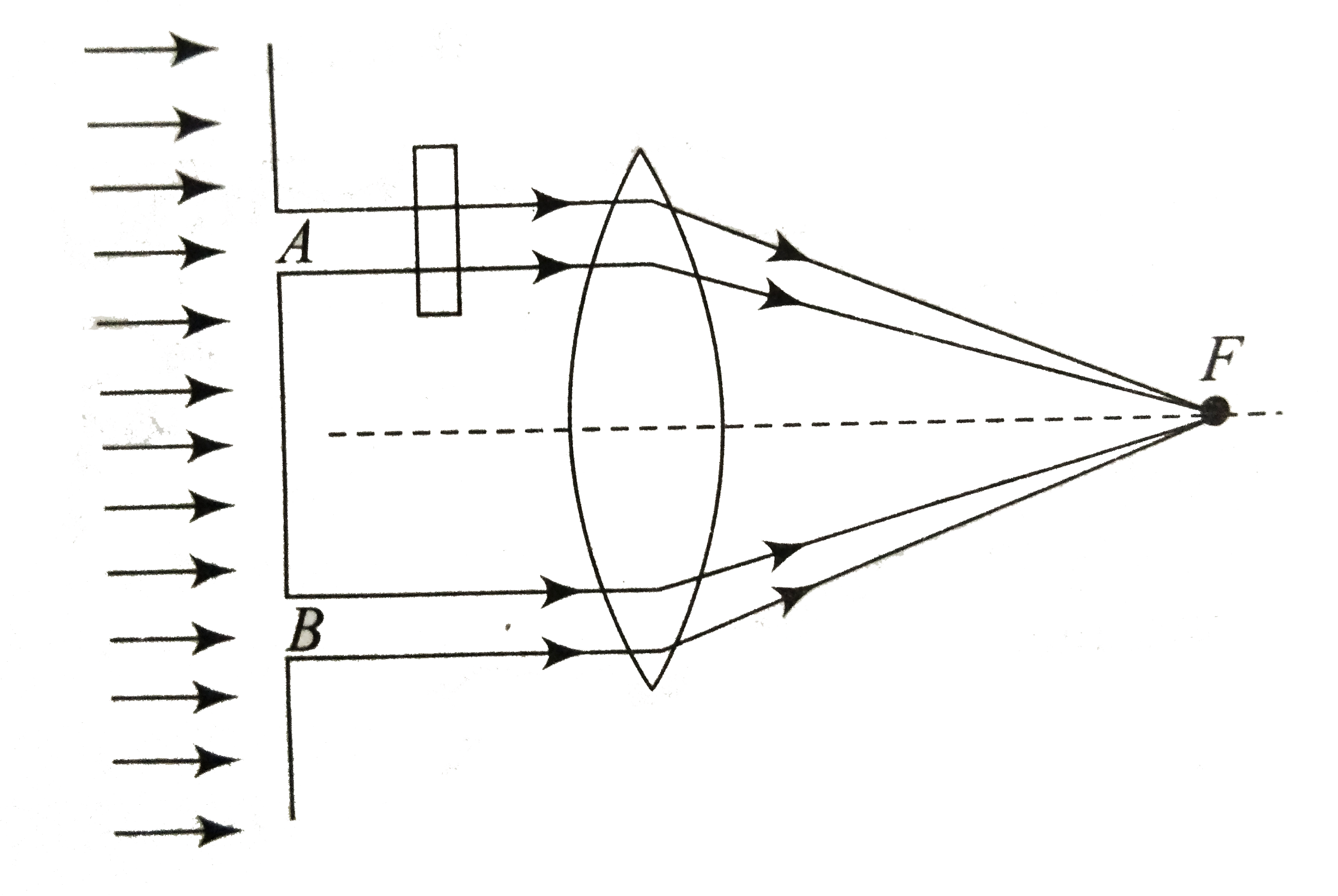 View Solution
View SolutionQuestion 25
In Young's experiment the upper slit is covered by a thin glass plate of refractive index 1.4 while the lower slit is covered by another glass plate, having the same thickness as the first one but having refractive index 1.7 interference pattern is observed using light of wavelength 5400Å
It is found that point P on the screen where the central maximum (n=0) fell before the glass plates were inserted now has 3/4 the original intensity. It is further observed that what used to be the fourth maximum earlier, lies below point P while the fifth minimum lies above P.
Calculate the thickness of glass plate. (Absorption of light by glass plate may be neglected.
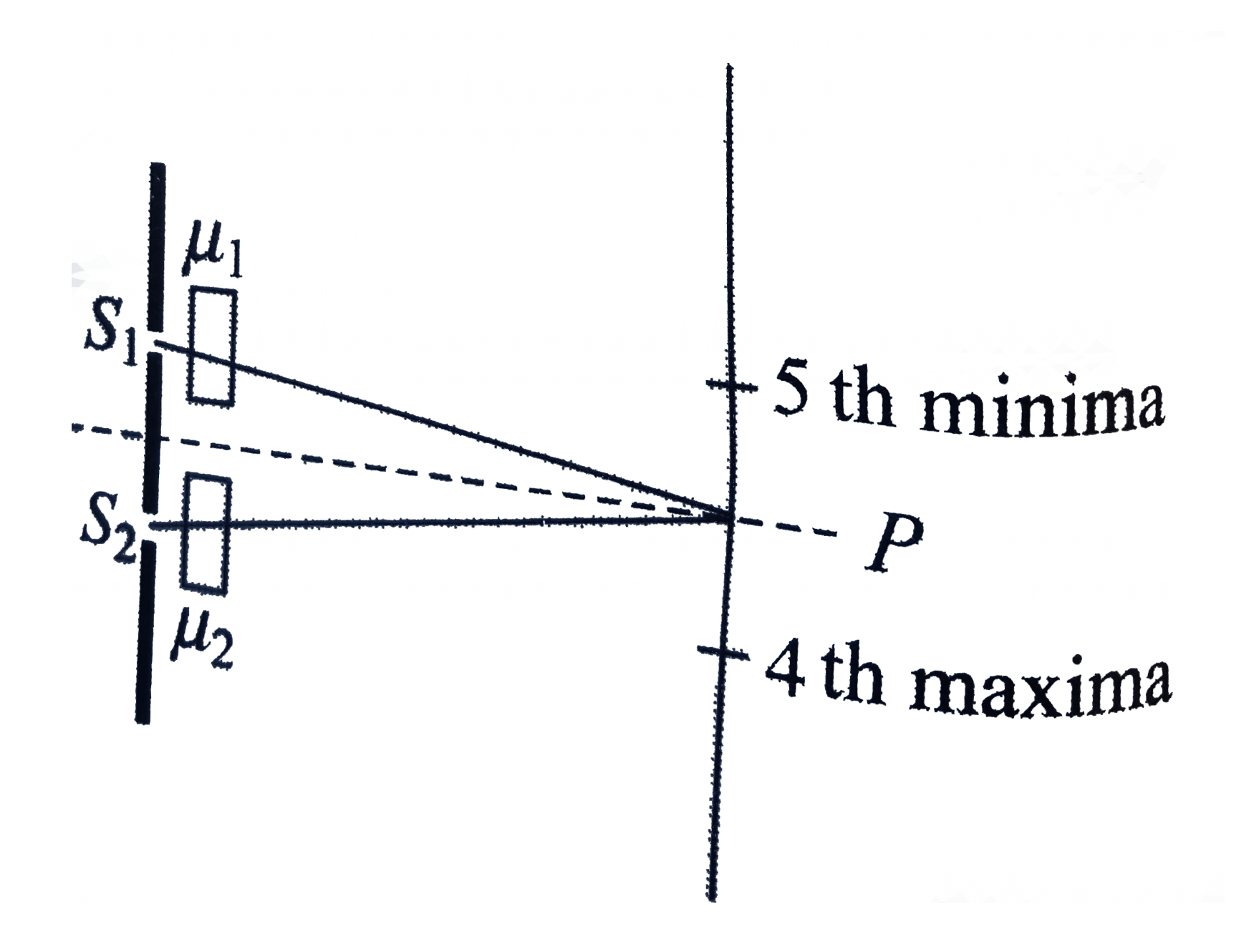 .View Solution
.View SolutionQuestion 26
A vessel ABCD of 10cm width has two small slits S1 and S2 sealed with idebtical glass plates of equal thickness. The distance between the slits is 0.8mm. POQ is the line perpendicular to the plane AB and passing through O, the middle point of S1 and S2. A monochromatic light source is kept at S,40cm below P and 2m from the vessel, to illuminate the slits as shown in the figure. Calculate the position of the central bright fringe on the other wall CD with respect of the line OQ. Now, a liquid is poured into the vessel and filled up to OQ. The central bright fringe is fiund to be at Q. Calculate the refractive index of the liquid.
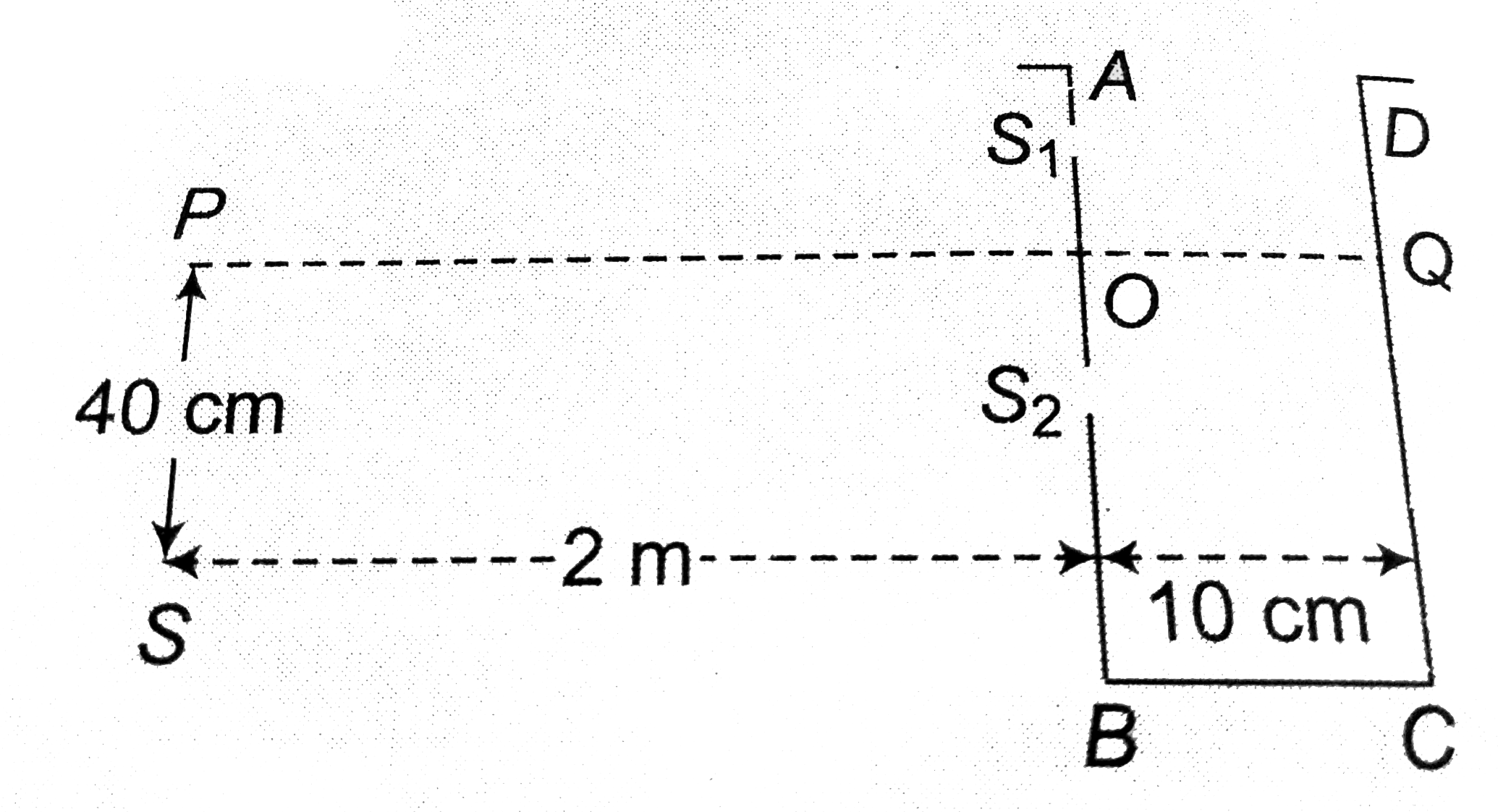 View Solution
View SolutionQuestion 29
Angular width of central maximum in the Fraunhoffer diffraction pattern of a slit is measured. The slit is illuminated by light of wavelength 6000Å. When the slit is illuminated by light of another wavelength, the angular width decreases by 30%. Calculate the wavelength of this light. The same decrease in the angular width of central maximum is obtained when the original apparatus is immersed in a liquid. Find the refractive index of the liquid.View SolutionQuestion 30
A lens of focal length 1m forms Fraunhofer diffraction pattern of a single slit of width 0.04cm in its focal plane. The incident light contains two wavwlength λ1 and λ2. It is found that the fourth minimum crresponding to λ1 and the fifth minimum corresponding to λ2 occur at the same point 0.5cm from the central maximum. Compute λ1 and λ2View SolutionQuestion 34
Unpolarized light of intensity 32 Wm−3 passes through three polarizers such that the transmission axis of the last polarizer is crossed with the first. If the intensity of the emerging light is 3Wm−2, what is the angle between the transmission axces of the first two polarizers ? At what angle will the transmitted intensity be maximum ? View Solution

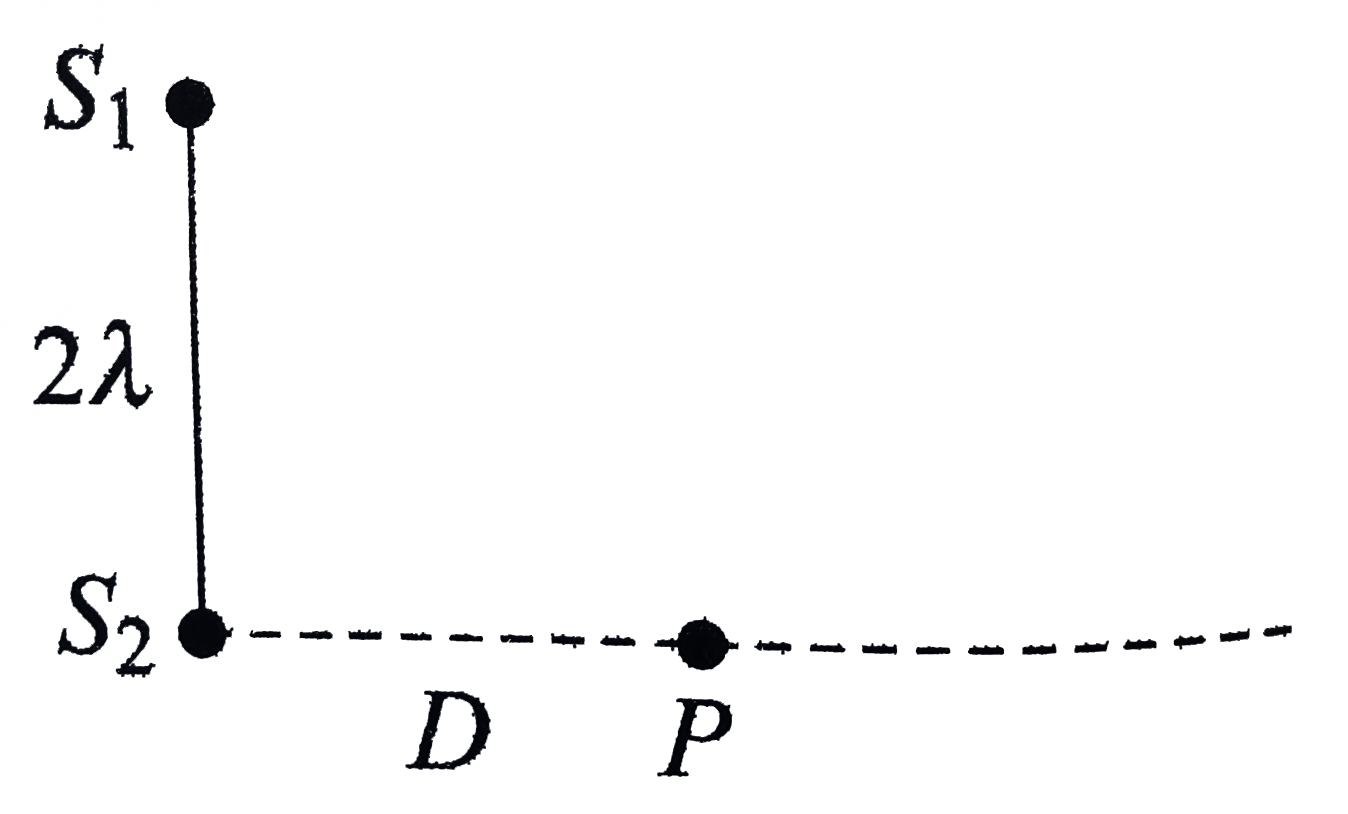 .
.